Brahmins of Death: How Funeral Priests Undertake the Final Journey to the Afterlife
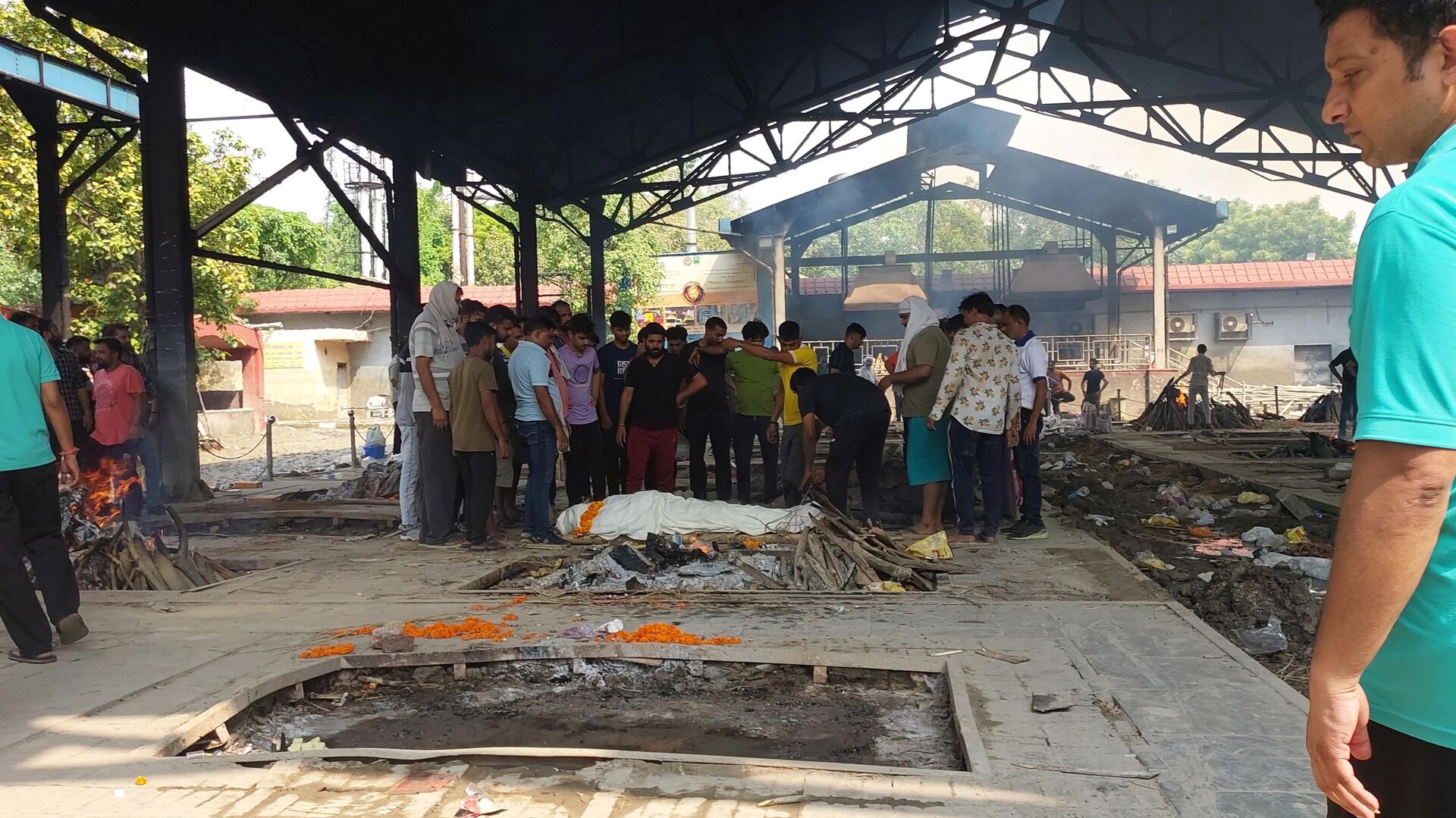
© Sputnik
Subscribe
The day a Hindu dies, his mourning period starts, lasting for 13 days with a priest performing prayers at the deceased's home. These are the customary last rituals of one's life span to help the dead attain liberation from the birth cycle.
When visiting a neighborhood cremation ground, some faces rarely change.
One of them is from the 'Acharya' family -- the clan priest who helps the dead undertake their last journey to the next world in Hindu lore.
His job revolves around enabling a bereaving family to bid adieu to their loved one in death. These Acharyas accompany the departed soul from the funeral pyre to the path of attaining Moksha (salvation) during the nearly two-week long rituals.
In Hinduism, it’s said that it takes five elements -- Agni (fire), Vayu(wind), Prithvi(earth), Jal (water), and Aakash (space) -- to form a body, which ultimately dissolves in them. Thereafter, the dead proceed on the next journey as per their deeds of life, explained Acharya Himanshu Sharma at Delhi’s famous Nigam Bodh Ghat cremation ground.

A Purohit (funeral priest) explaining some rituals to the mourning family and relatives of the deceased at the cremation ground
© Sputnik
The family performs certain 'Karmkand' (rituals) for the salvation of their deceased. And, the ones guiding or enabling the family to perform the rituals as per their culture are Acharyas, narrated Himanshu, a university graduate, who took to this profession after his father, an Acharya, breathed his last at 49.
Sputnik tried to explore their close experience of death, life, and rituals, as these Brahmins or funeral and death rite specialists come across thousands of dead and mourners in a lifetime.
What Makes Even a Priest Emotional
In a bid to unravel the Purohit's mindset about seeing death so closely, Sputnik talked to Madan Mohan Sharma, a well-known Acharya who has been performing the last rites for Punjabi families of Pakistani origin, at Nigam Bodh Ghat, for nearly five decades.
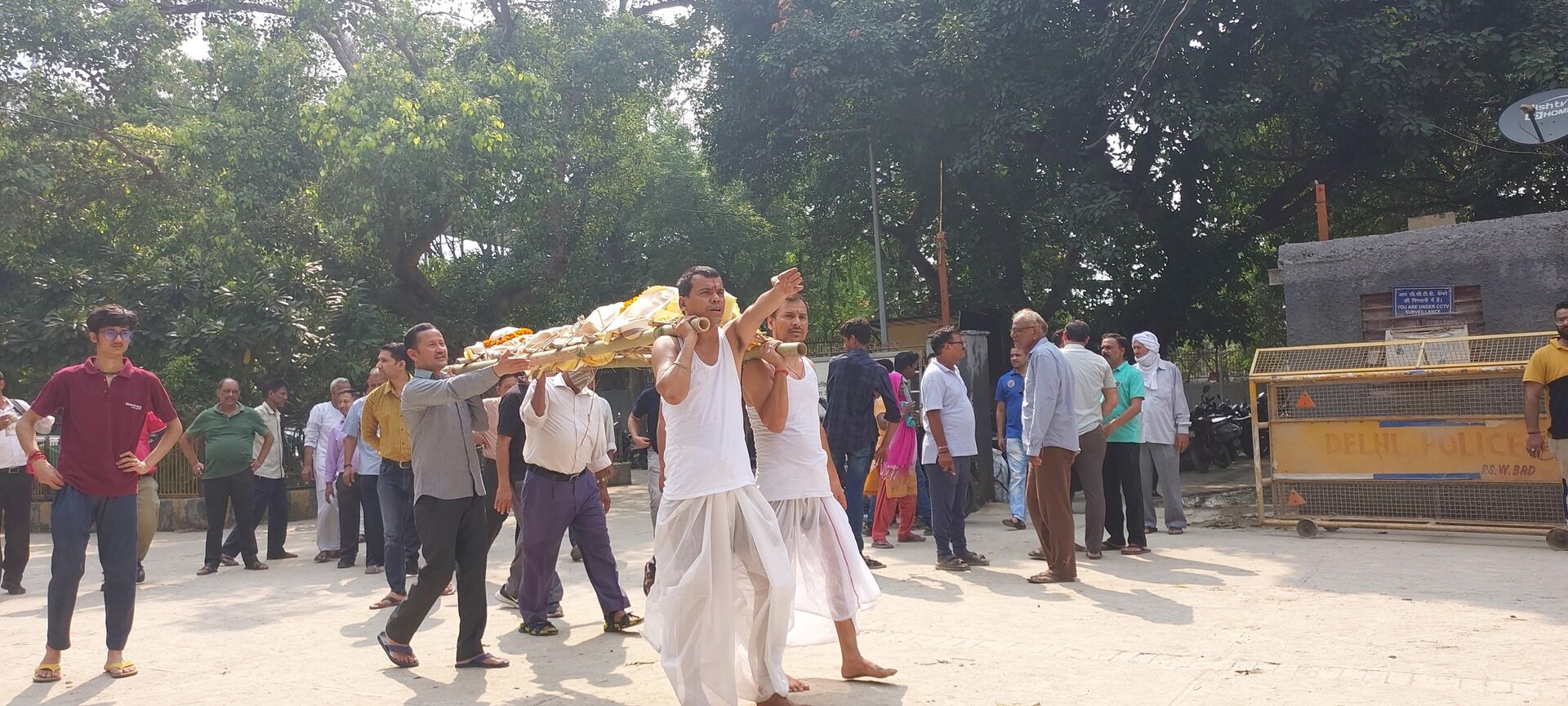
Family members bringing a dead body to the cremation ground as per Hindu customs
© Sputnik
"Our profession is akin to a doctor who has no choice but to see people in a most terrible state," he said. "It's natural for a person to die in old age. But it pains to watch a young person's body."
"It's quite a moving experience to witness a father performing his son's last rites. We feel the unfairness of life when we come across such demises," shared Acharya Madan Mohan. "Likewise, it's a soul-stirring experience when we see little kids crying over their father's dead body."
"Moments like that even make us feel that God could have been more kind to them. But we have been destined to meet grieving families in such painful moments and serve their dead," he stated.
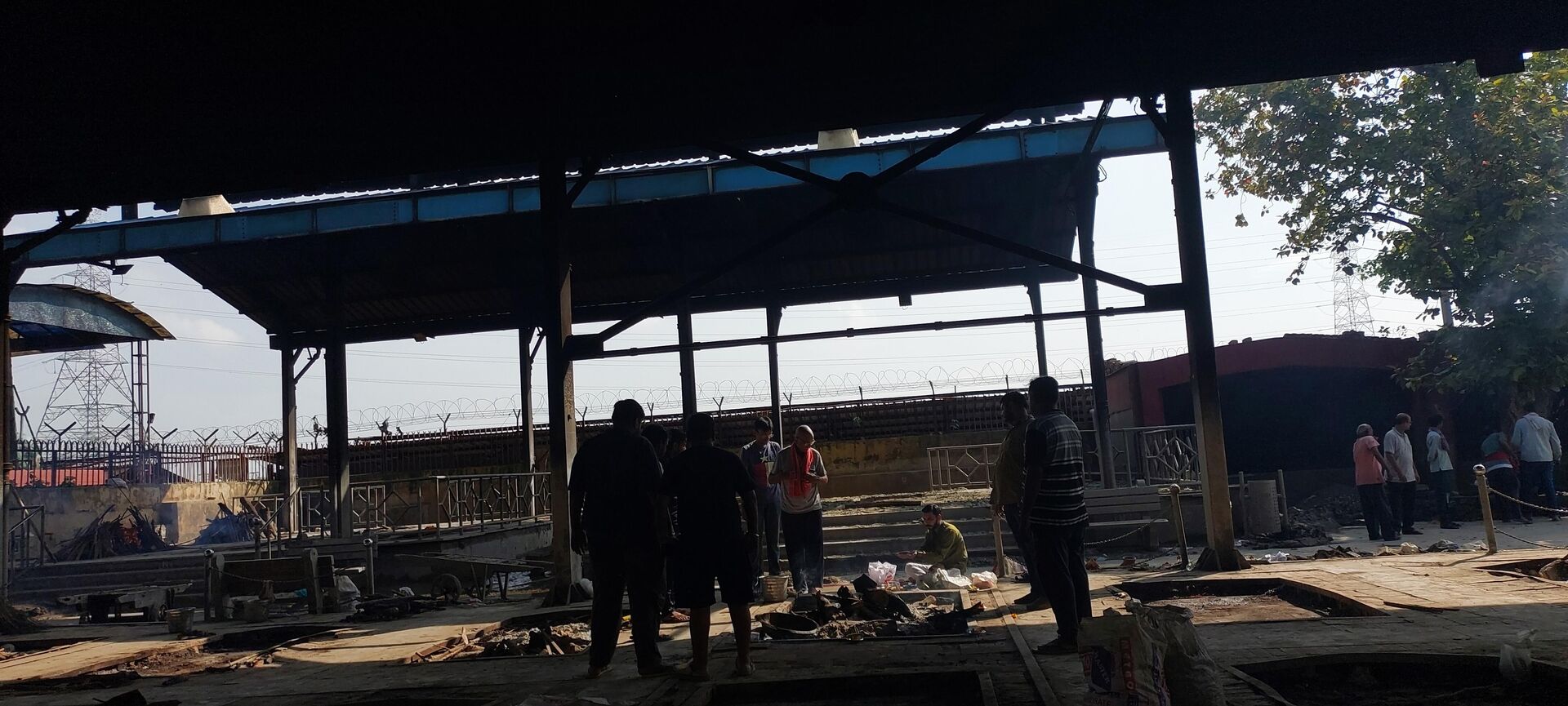
A Purohit (funeral priest), the Acharya, performing the fourth-day death rituals in the morning at the cremation ground
© Sputnik
When the Pyre Goes Up in Flames
Asked to describe what is normally the families' state of mind once their loved one's pyre is lit, he said: "The pain of separation is indeed inexpressible for even themselves. We develop a strong affection even for a pet of several years. And when it's about our own blood and flesh, it can only be felt by those who lost their beloved one."
Acharya explained that the parents do everything that's possible for their kids. And reminiscing the unforgettable moments of everyday life and parental sacrifices leaves them poignant, even if it may not be the same feeling for relatives.
"We also come across children performing rites without any feelings for parents. These are the ones who don't get a chance to realize their parents' presence or care for varying reasons. So, during rites, they just expect us to finish off the 13-day rituals at the earliest, and let them move on in life."
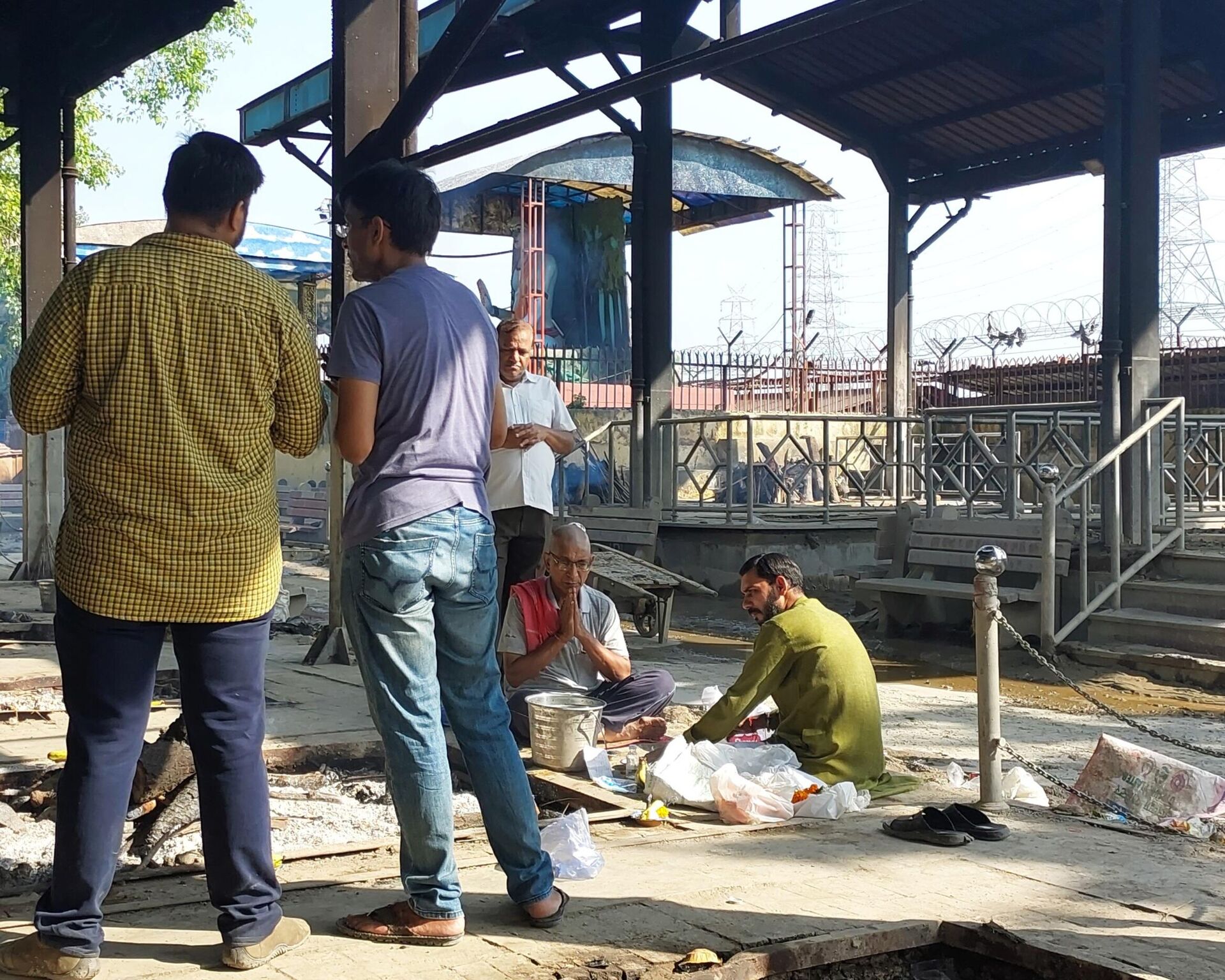
A Purohit perform rituals on fourth day of death before the mortal remains are collected for immersion by family
© Sputnik
People Paying Dearly for Skipping Death Rituals
According to Acharya Himanshu, people generally suffer from 'Pitra Dosha', or ancestral afflictions. It happens when a family member's 13-day rites as prescribed in 'Garuda Purana' (Hindu religious text) are not duly performed. It badly affects one's entire life.
He remarked that many people prefer shortcuts to finish off these rituals, at times in three to five days, citing a shortage of time. Ideally, it has to complete with feeding the Brahmin and yajna (sacred fire ritual) on the 13th day. It hurts to see the ones who can afford the rituals but pretend to be in a hurry.
When People Behave Meanly
He said it puts us off when people resort to bargain even with a Brahmin once he is done with all the rituals with such a pure mindset, performing yajna with so many well-meaning shlokas that serve the spirit of the dead.
"The same family won't mind splurging but would behave meanly when it comes to paying their Acharya. It certainly disappoints."
"The same family won't mind splurging but would behave meanly when it comes to paying their Acharya. It certainly disappoints."
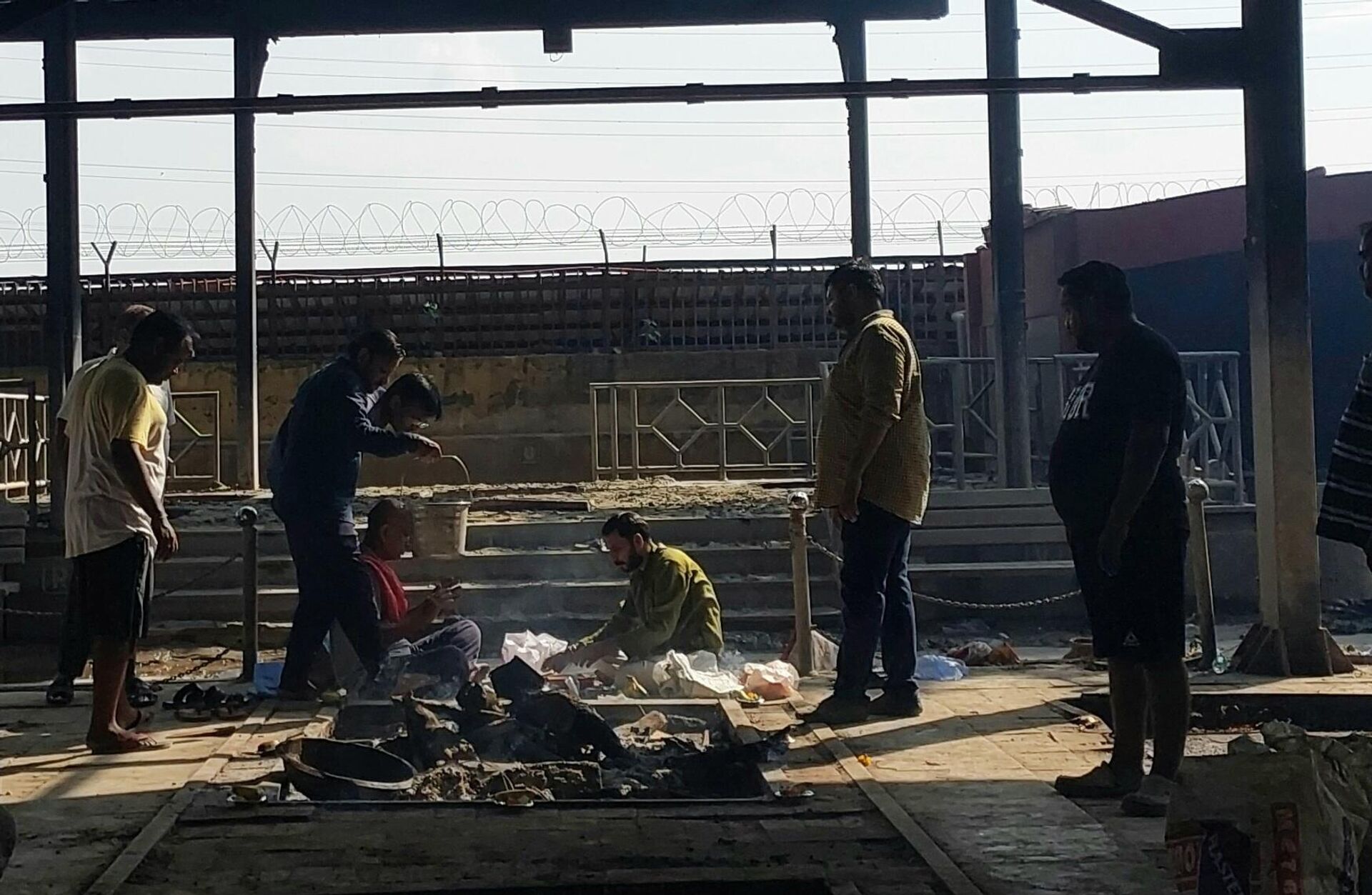
A Purohit, the Acharya, is performing the rituals generally done with religious chants and Sanskrit shlokas at the cremation ground
© Sputnik
When Acharya Madan Mohan was asked about some families' hesitation to pay for ritual services, he shared: "We can sense who can and cannot pay us duly and thus charge justifiably only from those who can."
"But we don't mind helping out such families if paying for cremation like the wood or rites appears beyond them," he added.
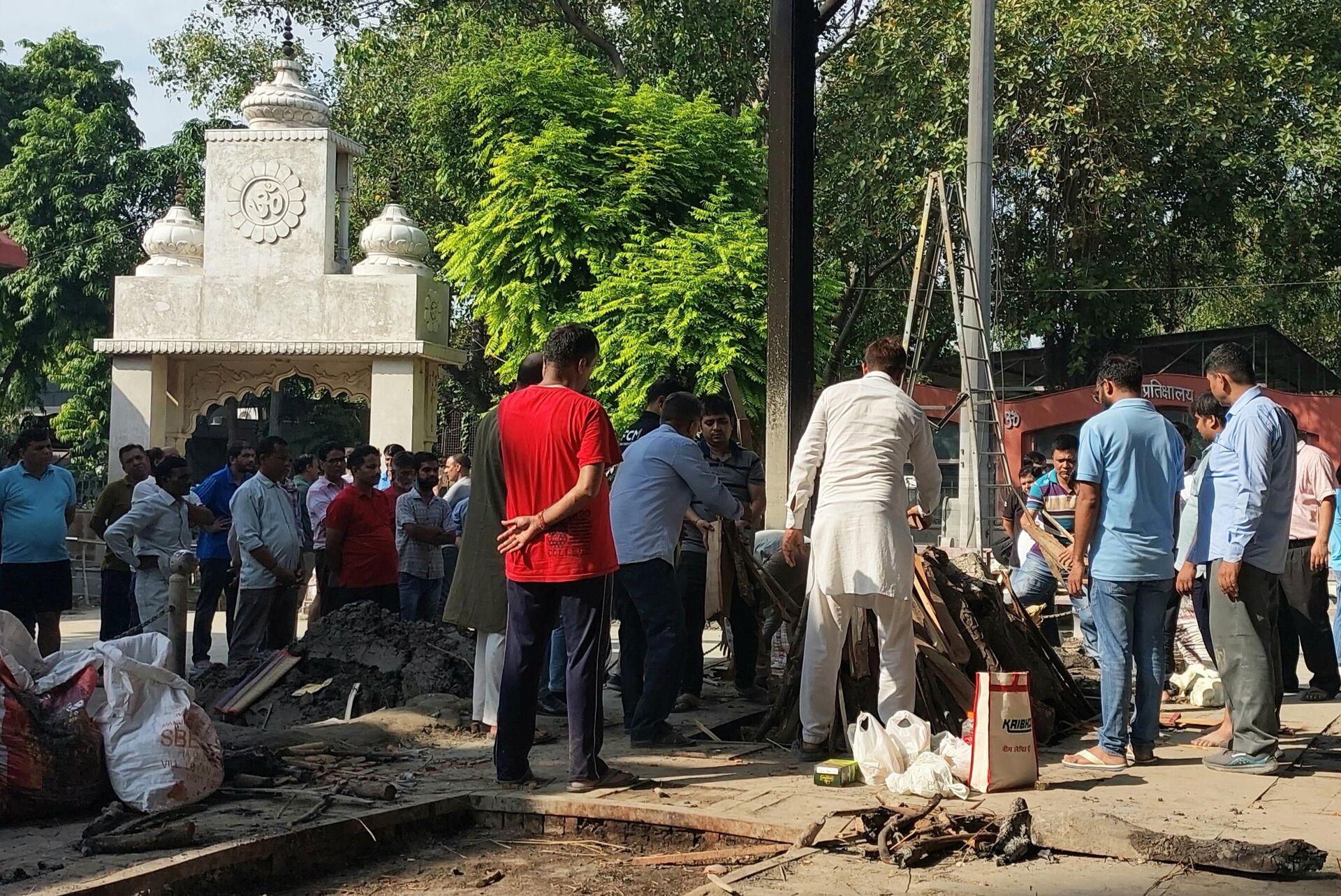
A Purohit (funeral priest) guiding and helping the relatives just ahead of cremation
© Sputnik

